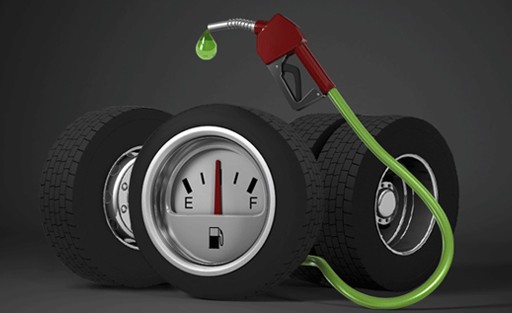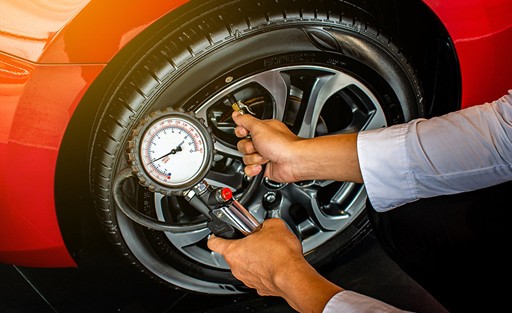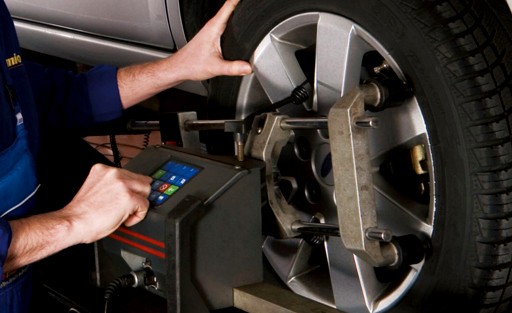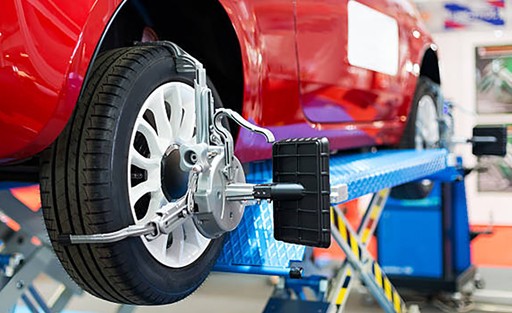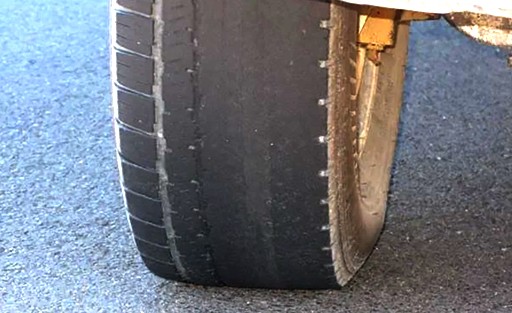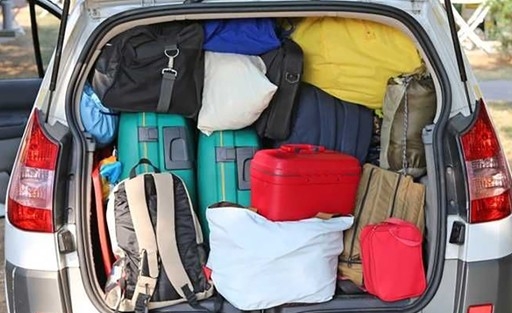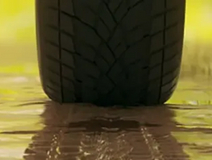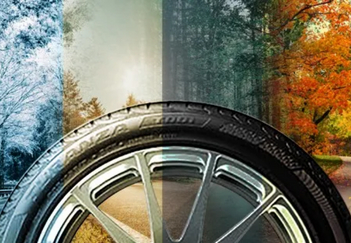
May 03, 2022
8 Ways You Can Save on Gas With the Right Tyres
With today’s soaring petrol prices, the right tyres can make a huge difference in improving your gas mileage. That’s why when buying tyres, consider not only their durability, grip, and strength but also fuel efficiency. This lets you cope with gas price cycles, and lessens your carbon footprint.
A quick note on rolling resistance
As the only things in your vehicle that make contact with the ground, tyres directly impact rolling resistance. What is rolling resistance? This is the energy your vehicle spends to keep its tyres rolling at a steady speed over any surface. More energy expended equals more wasted fuel. Though rolling resistance is a fact of road life, it can be reduced through the tips below.
Save gas with these 8 smart tyre tips
Worried that the tyres that came with your brand new vehicle will have you making more trips to the petrol station? The good news is that original-equipment tyres have been specifically engineered and designed for their partner models to be fuel efficient.
So, if you’re already satisfied with your old tyres’ performance, we recommend replacing them with similar types. This way, you don’t have to second guess your new tyres’ fuel efficiency. Here are more ways how tyres help you save gas:
1. Check your tyre pressure.
Under-inflated tyres cause their tread to kiss the ground, increasing friction, rolling resistance, tread wear, and fuel consumption. On the other hand, too much pressure also wears out tyres and may cause overheating, resulting in blowouts. If these aren’t enough to convince you, a U.S. fuel economy study states that proper tyre pressure lets you enjoy a 3% boost in gas mileage.
Pro tip: Check your tyre pressure monthly or better yet, weekly. Do this when tyres are cool, so you get a more accurate reading. Not sure about your tyre’s PSI (Pounds per Square Inch) or recommended pressure level? Look it up in your owner’s manual or in the sticker in the driver-side’s door jamb.
2. Rotate your tires.
Usually, front tyres wear out faster than their rear counterparts. By regularly rotating or changing the position of your tyres, you let their tread to evenly wear out. This extends tread life, which equates to tyre stability, fuel efficiency, and savings.
These patterns are an essential part of any tyre because they determine how well your tyres will grip the road or whatever other driving surface, including off-road terrains like sand, mud, rocks and more.
Pro tip: Rotate your tyres every 10,000 kilometers or every six months. If you often go on off-road trips, do this every 5,000 kilometers.
Also read: Your Complete Guide to Tyre Rotation
3. Align your wheels.
Wheel alignment refers to the direction and angle of your wheels when attached to your vehicle. With misaligned wheels, your tyres don’t roll; they drag. This may damage your wheels and suspension, and most certainly burns 10% more fuel according to Investopedia. Meanwhile, imbalanced tyres also lessen fuel efficiency, and make your ride uncomfortable. A technician can ensure that all your tyres have uniform weight by fastening small lead weights to the wheels.
Pro tip: Have your wheels balanced every 80,000 kilometres or every two years. You can also check your owner’s manual for the recommended interval. In case you didn’t know, Tyroola offers wheel balancing as a standard service in its partner fitting centres! Aside from ensuring a smooth ride, this process helps you spot possible issues in alignment, steering, or suspension.
4. Watch out for tread wear.
The hard fact is that throughout its tread life, a tyre has its strongest rolling resistance when it's brand new. Surprised? Think about it—new tyres sport treads at their deepest and clearest-cut. This increases rolling resistance, but also provides the tyres’ best grip when navigating dry, wet or snowy roads. When the tyres wear down, that’s when rolling resistance and fuel efficiency improves. Does this mean it’s better to buy second-hand tyres as their replacement? The answer is a resounding no. Sure, old tyres have lower rolling resistance, but their worn-out tread may cause hydroplaning and road accidents.
Pro tip: To check tread wear, insert an Australian 20-cent coin in the tread. If the tread still reaches the bill of the platypus, your tyre’s still good. If it doesn’t, it means that there is less than 3 mm of tread left on the tyres. Time to replace them! You can also use a tread depth indicator for a more accurate measurement.
Also read: When to Replace Tyres?
5. Ditch the extra weight.
Have your kettlebells and dumbbells been sitting in your trunk the last couple of weeks? Is your unused bike rack still attached to the top of your car? Remember that the heavier the vehicle’s load, the more petrol your engine will consume. Before driving, make it a habit to get rid of the stuff you don’t need. Both your tyres and wallet will thank you for it.
Pro tip: Accumulated dirt in your wheel hub and rims can also add weight, increasing rolling resistance. So, clean your vehicle regularly for a more fuel-efficient ride.
Also read: Tyroola’s Guide to Cleaning Your Tyres in Five Easy Steps
6. Check the tyre materials used.
Tyre manufacturers are constantly coming up with fuel-efficient features. These include tread patterns that facilitate efficient tyre rolling, and rigid sidewalls that diffuse tyre heat and lessen wasted energy. Over the years, they’ve also introduced new materials that lessen the weight of tyres, resulting in reduced tread friction. One of such materials is silica, which lowers rolling resistance by 20%, and boosts fuel efficiency by as much as 5%!
Pro tip: Silica works for both all-season and winter tires. Because it makes the tread stiffer, it provides fantastic wet grip and braking. Silica also maintains tread flexibility during the winter months.
7. Consider green tyres.
Green or eco tyres boast of being both economical and environment-friendly. It’s a valid claim since their features are all about lowering fuel consumption, which, in turn, helps save the planet. These tyres are typically made from organic raw materials and recycled components, ultimately aiming for lower rolling resistance and petrol savings. Examples of green tyres include the Bridgestone Ecopia EP150, Goodyear Assurance FuelMax, Michelin Energy XM2, and Pirelli Scorpion Verde All-Season.
Pro tip: Check out the EU tyre labels of tyres to help you compare fuel consumption and efficiency. Take your eco-friendly practice a step further by checking the government’s Green Vehicle Guide. This gives you an overview of the fuel consumption and emissions of light vehicles in the country.
8. Know that tyre size matters.
Some vehicle owners swap their original tyres for smaller or bigger ones, depending on their aesthetic preference. For instance, low-profile tyres, which have shallower sidewalls, and are therefore wider and lower, reduce rolling resistance. Meanwhile, high-profile tyres have better braking and traction in wet and dry conditions.
Pro tip: More than tyre size, the important thing to consider is if the tyres match your vehicle and driving habits. Using the wrong tyres will push your vehicle to overcompensate with gas—a no-no when you’re working within a strict fuel budget.
Also read: How to Choose the Right Tyres for My Car?
All set to replace your tired tyres? Start browsing through our curated selection of top-quality tyres that ensure low fuel consumption and high performance. For more tyre tricks and tips, explore our blog and helpful guides.
